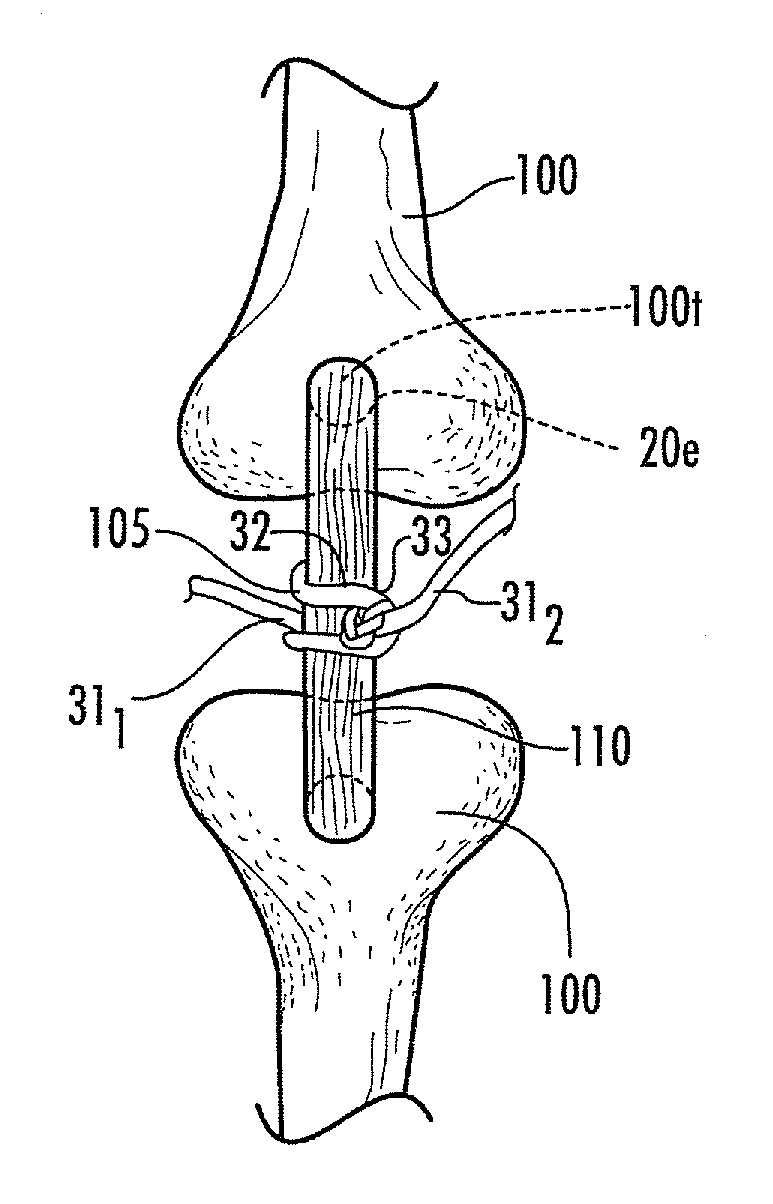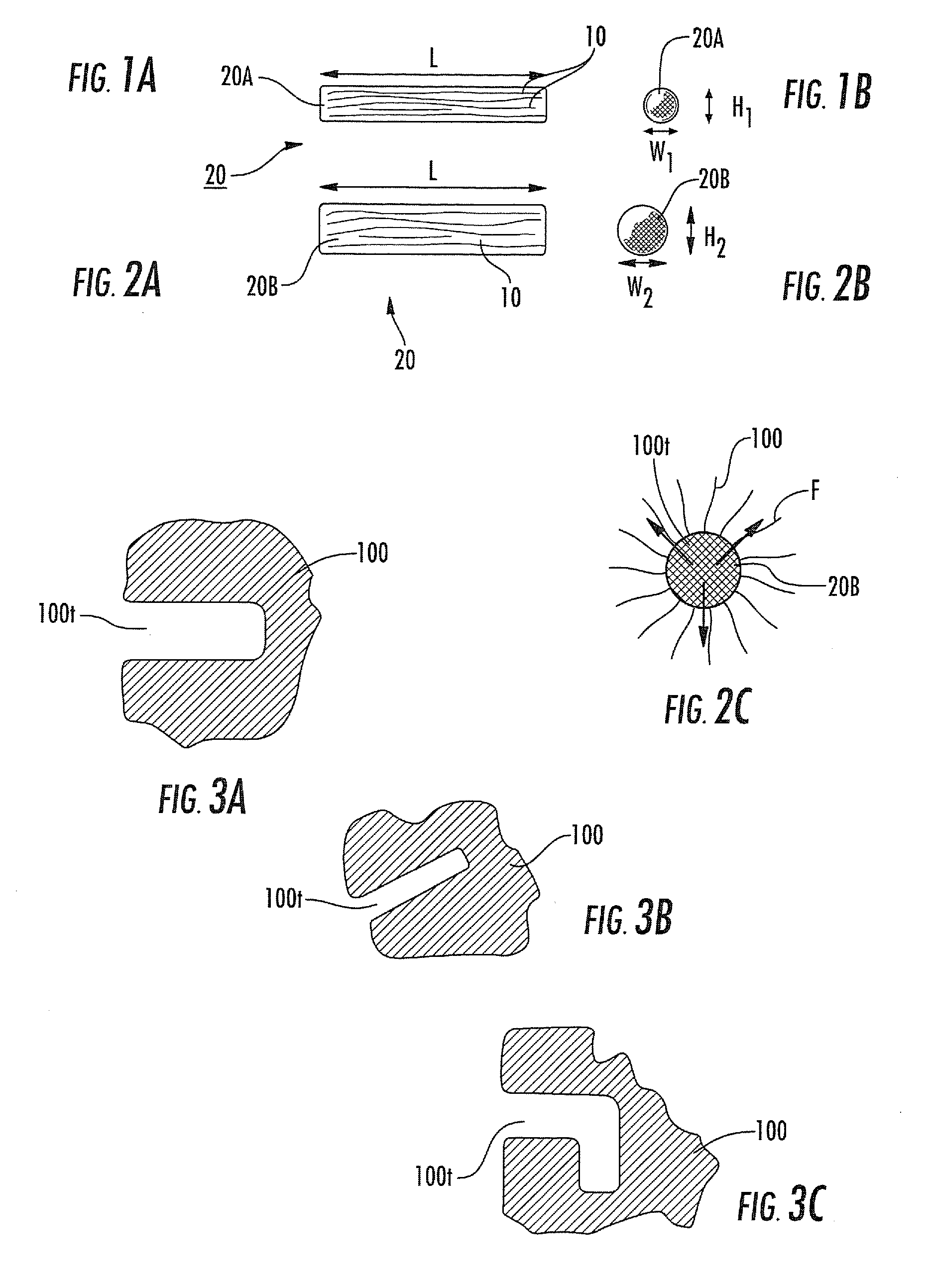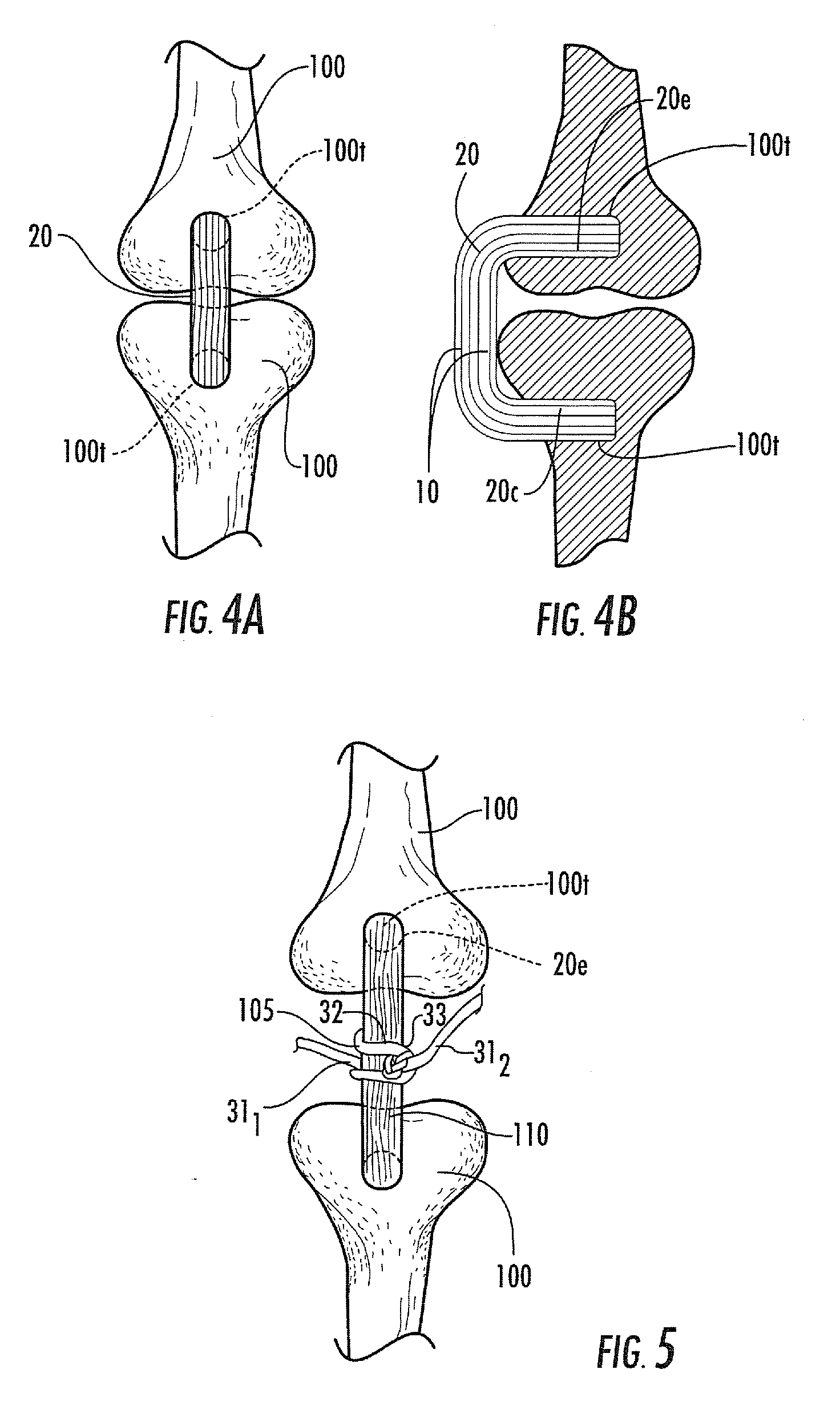In vivo hydraulic fixation including bio-rivets using biocompatible expandable fibers
- Summary
- Abstract
- Description
- Claims
- Application Information
AI Technical Summary
Benefits of technology
Problems solved by technology
Method used
Image
Examples
examples
[0109]The following discussion describes a study of mechanical properties of hydraulically fixed polymerized collagen fibers in bone tunnels.
[0110]Materials and Methods
[0111]Biological fibers: NDGA polymerized collagen fibers were prepared substantially as previously described in Koob et al., Material properties of NDGA-collagen composite fibers: development of biologically based tendon constructs, Biomaterials, 23:202-212 (2002); and / or as described in co-pending U.S. Provisional Application Ser. No. 60 / 883,408, titled, Methods of Making High Strength NDGA Polymerized Collagen Fibers and Related Collagen-Prep Methods, Medical Devices and Construct, the contents of the above are incorporated by reference as if recited in full herein. Dried fibers averaged 0.26±0.04 mm in diameter. Hydrated fibers had a mean tensile strength of 90±15 MPa or 10±1N breaking force. Dry fiber constructs were made by arranging fibers in a round parallel array with one end glued (Loctite 454 cyanoacrylate)...
PUM
| Property | Measurement | Unit |
|---|---|---|
| Length | aaaaa | aaaaa |
| Length | aaaaa | aaaaa |
| Fraction | aaaaa | aaaaa |
Abstract
Description
Claims
Application Information
 Login to View More
Login to View More - R&D
- Intellectual Property
- Life Sciences
- Materials
- Tech Scout
- Unparalleled Data Quality
- Higher Quality Content
- 60% Fewer Hallucinations
Browse by: Latest US Patents, China's latest patents, Technical Efficacy Thesaurus, Application Domain, Technology Topic, Popular Technical Reports.
© 2025 PatSnap. All rights reserved.Legal|Privacy policy|Modern Slavery Act Transparency Statement|Sitemap|About US| Contact US: help@patsnap.com



